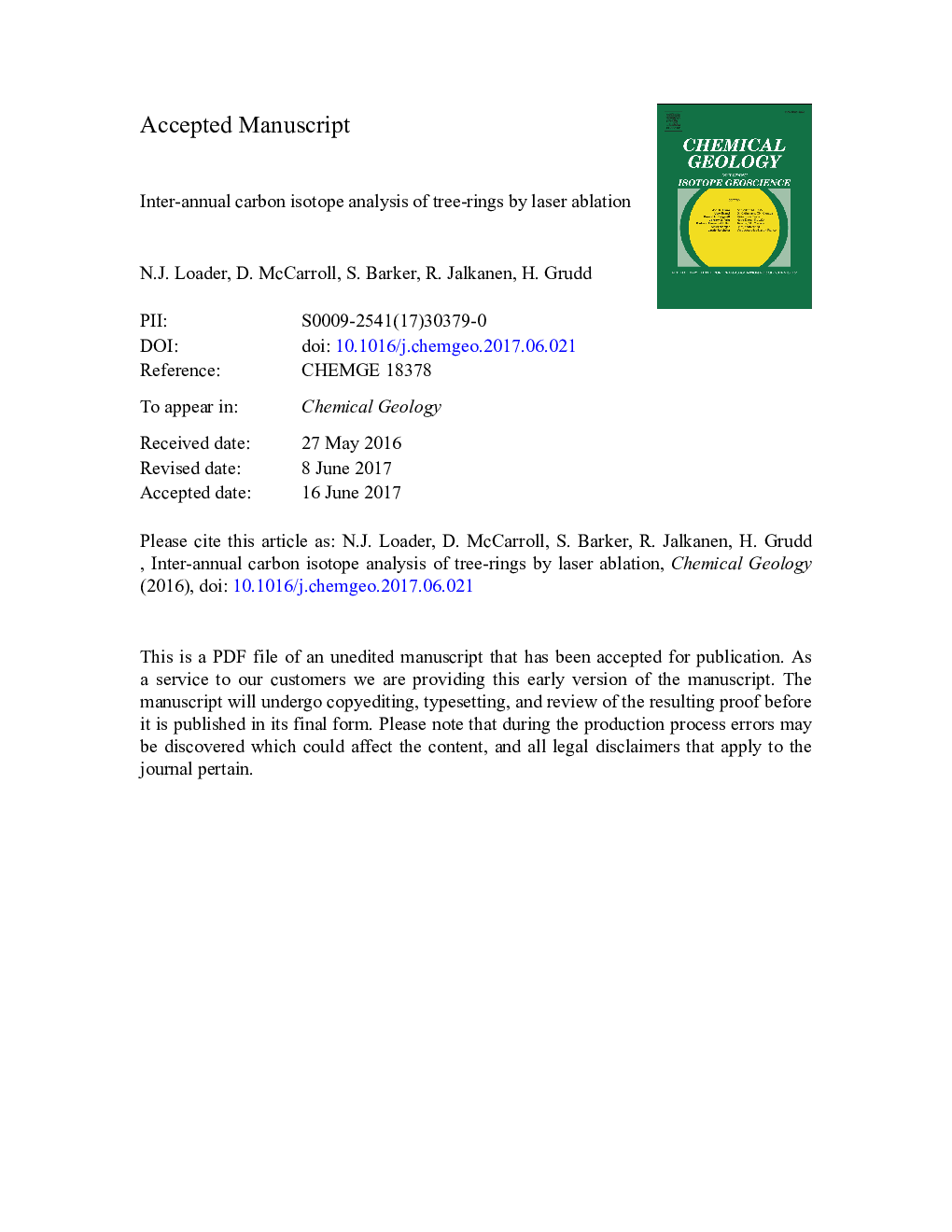| Article ID | Journal | Published Year | Pages | File Type |
|---|---|---|---|---|
| 5782838 | Chemical Geology | 2017 | 14 Pages |
Abstract
The stable carbon isotopic analysis of tree-rings for environmental, plant physiological and archaeological applications using conventional methods is occasionally limited by physical constraints (narrow rings) or administrative concerns (requirement for non-destructive sampling) that prevent researcher access to scientifically valuable wood samples. Analysis of such archives by laser-ablation can potentially address these issues and facilitate access to restricted archives. Smaller quantities of wood are required for analysis by laser ablation, hence the approach may be considered less-invasive and is virtually non-destructive compared to standard preparation methods. High levels of intra-annual isotopic variability reported elsewhere mean that a single measurement may not faithfully represent the inter-annual isotopic signal, so before such an approach can be used with confidence it is necessary to compare the stable carbon isotopic data produced using these two methods. This paper presents stable carbon isotope (δ13C) data from the resin-extracted wood of dated Scots Pine (Pinus sylvestris L.) tree-rings analysed using a modified Schulze-type laser-ablation system with results obtained using conventional manual sampling and analysis of α-cellulose prepared from the same tree-ring groups. The laser sampling system is found to perform very well against established more invasive methods. High correlations are observed between the methods for both raw and Suess corrected data (r > 0.90 n = 50). These results highlight the potential for using laser-sampling to support the development of long isotope chronologies, for sampling narrow rings or for pre-screening cores prior to analysis using more detailed or labour intensive methods.
Related Topics
Physical Sciences and Engineering
Earth and Planetary Sciences
Geochemistry and Petrology
Authors
N.J. Loader, D. McCarroll, S. Barker, R. Jalkanen, H. Grudd,
